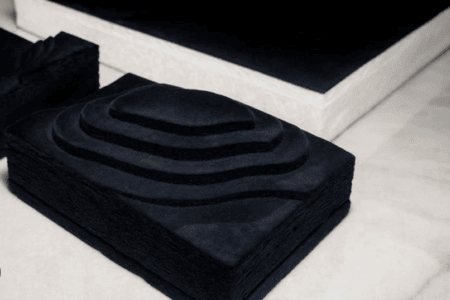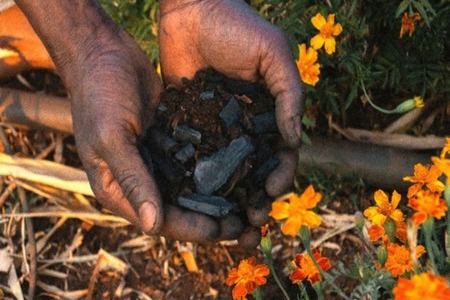
Lack of interest seen in Vietnam garment firms for TPP
YarnsandFibers News Bureau 2015-12-15 16:00:00 – HanoiVietnam garment industry despite being expected to benefit the most from the TPP, few of the 2,000 garment firms across the country have shown interest in it. Only large companies seem to have the capability to study and make preparations for the TPP as it is expected to bring more export opportunities, especially in the big markets of the US, Japan and Australia.
According to the Ho Chi Minh City Association of Enterprises, only half of 200,000 small and medium-sized enterprises (SMEs) in the city have information about the TPP. They are not interested in the trade deal and have made no preparations to tap the opportunities or deal with the challenges the agreement could pose, Pho Nam Phuong, head of the HCMC Center for Trade and Investment Promotion, said.
Her center has invited enterprises to many free conferences on the TPP, but they are not interested in attending, she said. The lack of interest is because their focus remains on how to survive amid the economic difficulties and not the TPP, which would not directly affect them immediately.
In fact, many local enterprises are ignorant about the free trade agreements that Vietnam has signed, Phung Thi Lan Phuong, head of the Vietnam Chamber of Commerce and Industry’s FTA Department, said, citing the case of a company which did not know about the ASEAN-Japan FTA until its Japanese partner asked for a certificate of origin to take advantage of the benefits offered under the pact.
Many Vietnamese firms have, in this manner, frittered away benefits FTAs offer.
Even the few who have asked the VCCI about the TPP mainly focused on tariff cuts and were simply not interested in other important commitments like those on labor, the environment, and intellectual property, Phuong said.
But Phong Phu, leading garment textile manufacturers and exporters in Vietnam appears to be an outlier since most other companies are uninterested in the TPP and not making preparations to capitalize on it. Pham Xuan Trinh, CEO of Phong Phu, said that thes firm would install an additional production line comprising machines for weaving, dyeing and sewing in 2016. The line with a monthly capacity of 300 tons of fiber will help the company increase its output and exports.
To capitalize on TPP opportunities, the company also plans to cooperate with local and foreign firms to develop its raw material supply chain. Now the Vietnamese garment sector heavily depends on imported materials, mainly from China and some ASEAN countries.
The newly-inked TPP will lower import taxes in many large member economies like the US, Canada, Australia, and Japan. China is not a member. Import tariffs in the US, the biggest buyer of Vietnam’s leading export item, textiles, will be cut from 17-32 percent now to zero.
But companies interested in the TPP are mainly foreign owned and large corporations based in Hanoi and Ho Chi Minh City.
In contrast to domestic companies, many foreign firms plan to expand in Vietnam to capitalize on export opportunities offered by the trade pact, which scraps tariffs in many markets, including the US, the world’s biggest economy.
Jiangsu Yulun Textile Group of China has recently got a license for a US$68-million textile, dyeing, and yarn plant in an industrial zone in Nam Dinh Province near Hanoi.
The industrial zone’s managers said that the factory would go on stream in the middle of 2016 and produce 9,816 tons of yarn and 21.6 million meters of cloth and dye 24 million meters of both annually.
Nam Dinh authorities said that a Hong Kong investor wants to build a garment and textile industrial zone on 1,000 hectares in the province.
In Ho Chi Minh City, Forever Glorious Company belonging to Taiwanese corporation Sheico has committed a $50-million investment to produce clothing and accessories for water sports. Gain Lucky Limited belonging to China-based Shenzhou International, who makes garments for Nike, Adidas, and Puma, also announced plans to invest $140 million in the city to build a 45-hectare center for designing and producing high-end products.
The TPP, which has 12 members and encompasses 40 percent of the world’s economic output, is likely to see the smaller members become standout performers.
Malaysia and Vietnam, for example, have no other trade agreement with the US, a voracious consumer of both raw materials and manufactured products, meaning their exporters must pay tax on products they ship to the US.
The TPP will give member economies preferential treatment, eliminating or reducing tariffs across most industries, giving them a leg up over rivals like China, Thailand and Indonesia who are not part of the deal.
But this will be contingent on certain conditions -- for instance, apparel has to be made using yarn and other materials produced in member countries.
Vietnamese garment manufacturers are not financially strong enough to invest in their own yarn and textile facilities, and rely on China and other Southeast Asian countries for most feedstock.
Local firms also lag behind in marketing and product development skills.
In the event, economists fear that the trade deal would benefit foreign firms coming here more than local ones unless the latter develop a better raw materials base and business skills.
According to Peterson Institute for International Economics, the mammoth trade agreement is seen as a game-changer for Southeast Asian economies. By 2025 membership of the TPP could boost Vietnam’s exports by 29 percent, the institute predicted.
Market Intelligence
Ask for free sample Report

experience
Customer Base
dedicated team
Countries Served Worldwide









